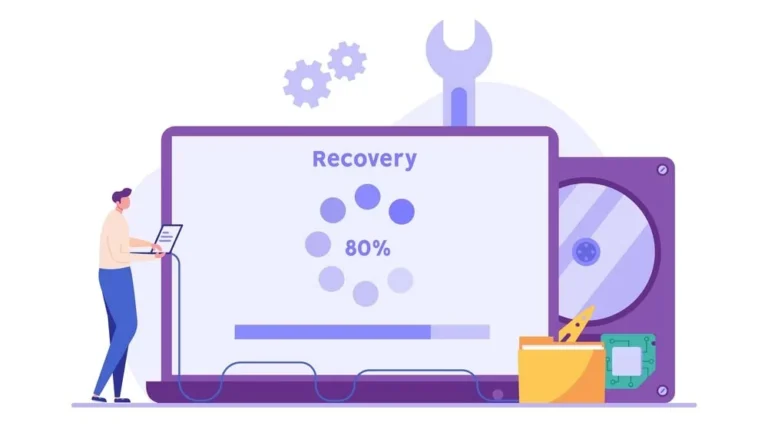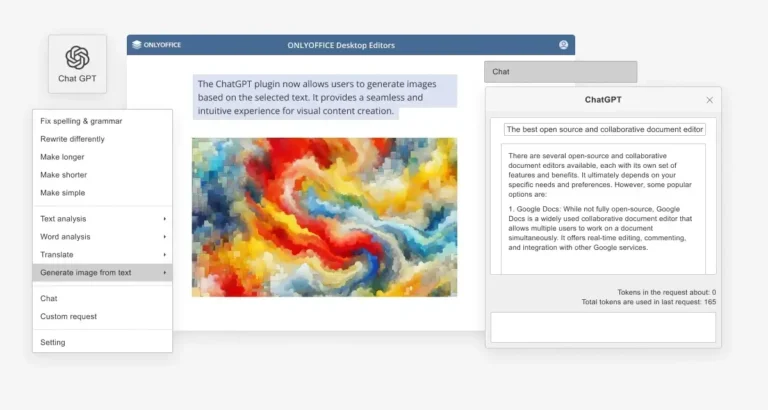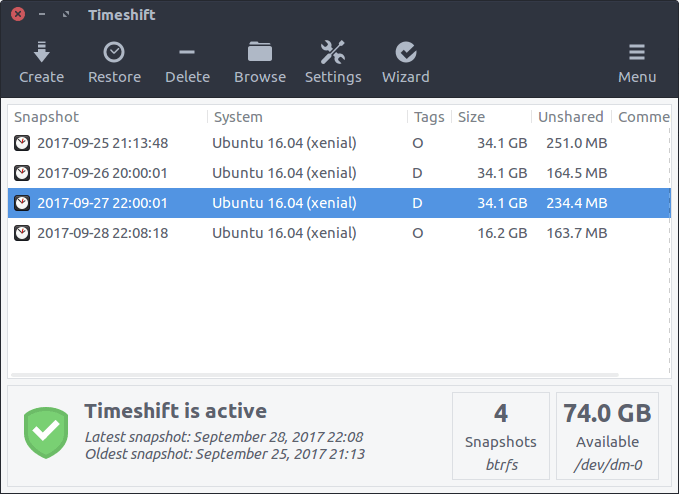Are you looking to enhance your data analysis skills with Python? Look no further than Pandas! This open-source library offers high-performance data structures and analysis tools that are both powerful and user-friendly.
In this article, we will explore what Pandas is, why it is essential for data analysis, and how you can get started with it. From key features to project samples and user reviews, we will cover everything you need to know to master Pandas.
Let’s dive in and discover the world of Pandas!
Key Takeaways:
Contents
- 1 Key Takeaways:
- 2 Introduction to Pandas
- 3 Getting Started with Pandas
- 4 Exploring Pandas Features
- 5 Key Features of Pandas
- 6 Project Samples
- 7 Project Activity Insights
- 8 Categories in Pandas
- 9 Licensing Information
- 10 Staying Updated with Pandas
- 11 Reviews and Feedback
- 12 Frequently Asked Questions
- 12.1 What is Pandas and why is it useful?
- 12.2 What types of data structures does Pandas offer?
- 12.3 How does Pandas handle missing data?
- 12.4 What kind of data analysis tools does Pandas provide?
- 12.5 Can I use Pandas with other libraries in Python?
- 12.6 Is Pandas suitable for beginners in data science?
Introduction to Pandas
Introduction to Pandas provides a comprehensive overview of Python’s library that excels in data manipulation and analysis.
Pandas, a powerful tool in the Python ecosystem, offers immense capabilities in handling data frames with ease, making it a popular choice for processing and analyzing datasets. It simplifies the process of performing various data analysis tasks such as data cleaning, transformation, and exploration, all thanks to its rich set of functions and methods.
Learning Pandas opens up a world of opportunities for effective data manipulation and allows users to dive deep into the realm of data science and analytics. By mastering Pandas through tutorials and practical exercises, individuals can enhance their understanding of data structures and develop proficiency in utilizing its functionalities for advanced data processing.
What is Pandas?
Pandas is a Python library renowned for its efficiency in handling data structures like data frames and conducting extensive data analysis and manipulation.
One of the key functionalities that sets Pandas apart is its ability to easily read and write data from and to various file formats such as CSV, Excel, SQL databases, and more. This makes it extremely versatile for handling different types of data sources seamlessly.
Moreover, Pandas provides powerful tools for data cleaning, transformation, and aggregation, allowing data scientists and analysts to efficiently preprocess and analyze datasets. Its intuitive syntax and rich set of functions simplify complex operations, enabling users to perform tasks like filtering, grouping, merging, and reshaping data with ease.
Why Pandas?
Pandas stands out due to its robust statistical analysis, advanced visualization capabilities, and seamless integration with machine learning algorithms in Python.
One of the key advantages of using Pandas is its ability to handle large datasets efficiently, providing powerful data structures like DataFrames that allow for quick data manipulation and analysis.
Pandas simplifies complex data operations by offering a wide range of functions and methods that make data cleaning, transformation, and exploration much easier and more intuitive.
For those involved in data-driven decision-making processes, Pandas proves to be an invaluable tool, enabling individuals and organizations to extract valuable insights from their data with greater ease and efficiency.
Applications of Pandas
Pandas finds extensive applications in data cleaning, exploration, and preparation tasks across various domains including research, engineering, and agriculture science.
By providing a powerful and flexible framework, Pandas simplifies the process of working with structured data, making it a preferred tool for data scientists and analysts. Its ability to handle large datasets efficiently, manage missing values, and manipulate data with ease, enhances the overall efficiency of data processing pipelines.
Furthermore, Pandas plays a crucial role in data visualization, enabling users to create insightful charts, graphs, and plots to communicate findings effectively. Its seamless integration with other libraries like Matplotlib and NumPy extends its functionality, allowing for a comprehensive analysis of complex datasets.
Getting Started with Pandas
Getting Started with Pandas involves understanding the basics of data frames, learning essential functions, and exploring the tutorial series to master Pandas proficiency.
One of the core concepts to grasp when starting with Pandas is the data frame. Data frames are two-dimensional, size-mutable, and potentially heterogeneous structures with labeled axes (rows and columns). They are essential for data manipulation and analysis in Pandas.
As a beginner, it is crucial to familiarize yourself with key functions such as read_csv(), head(), and info() to efficiently work with data frames. These functions allow you to load data, preview data, and obtain information about the dataset, respectively.
To kickstart your Pandas journey effectively, consider following a structured tutorial series that covers topics gradually, from basic operations to advanced techniques. Step-by-step tutorials can significantly aid in building a strong foundation in Pandas programming.
Audience: Who Should Learn Pandas
Pandas caters to a diverse audience including data scientists, engineers, and researchers seeking efficient data manipulation and analysis tools.
For professionals working in these domains, mastering Pandas can significantly enhance their productivity and effectiveness in handling large datasets. With its powerful data structures like DataFrame and Series, Pandas simplifies tasks such as data cleansing, transformation, and aggregation. This library offers a plethora of functions for statistical analysis, data visualization, and integration with other tools like NumPy and Matplotlib.
By leveraging the functionalities of Pandas, professionals can streamline their data workflows, automate repetitive tasks, and uncover hidden patterns or trends within their datasets. The ability to quickly load, clean, and manipulate data in Pandas give the power tos users to dive deeper into their data, extract meaningful insights, and make informed decisions based on the analysis.
Prerequisites To Learn Pandas
Before diving into Pandas, it is essential to have a basic understanding of Python programming, familiarity with NumPy, and a grasp of fundamental data frame concepts for better data insights.
To master Python, start by becoming familiar with its syntax, data types, functions, and control structures. A strong foundation in Python will aid in seamless navigation through Pandas functions and data manipulation techniques. Likewise, delve into NumPy to hone your skills in numerical operations, array manipulation, and mathematical functions essential for effective data analysis. Understanding the basics of data frames, such as indexing, slicing, and filtering, will significantly enhance your ability to extract valuable insights from complex datasets.
Setting Up Pandas Codebase
Setting up the Pandas codebase involves accessing the comprehensive documentation, engaging with the active community, and exploring the latest features and updates.
One key aspect of navigating the Pandas codebase efficiently is to delve into the detailed documentation available on their official website. This documentation is meticulously crafted to assist users in understanding the various functionalities and methods within Pandas. Active participation in community forums like Stack Overflow or the Pandas Google Group can provide invaluable insights and solutions to common issues faced during coding.
Staying informed about the latest features and enhancements released by the Pandas development team is crucial for maximizing the capabilities of this powerful library. Regularly checking the release notes and official announcements can help users leverage new functionalities and optimizations effectively.
Exploring Pandas Features
Exploring Pandas Features unveils its capabilities as a fast, flexible, and powerful Python toolkit for efficient data manipulation and analysis.
One of the key strengths of Pandas lies in its ability to work seamlessly with various data structures, such as Series and DataFrames, allowing users to handle complex datasets with ease. This versatile library offers a wide range of functions for tasks like data cleaning, reshaping, merging, slicing, and filtering data, making it an essential tool for data scientists, analysts, and researchers. The speed and efficiency with which Pandas processes large volumes of data ensure swift and accurate insights, saving valuable time and resources.
Fast, flexible, and powerful Python data analysis toolkit
Pandas is recognized as a fast, flexible, and powerful Python toolkit specifically designed for data analysis, manipulation, and utilizing advanced functions.
One of the standout attributes of Pandas is its incredible speed, allowing users to efficiently handle large datasets without compromising performance. Its ability to perform complex operations swiftly makes it a favorite tool among data professionals.
Plus speed, Pandas offers remarkable flexibility, providing a wide array of functions and methods for data manipulation. Users can easily clean, transform, and reshape data, streamlining the entire data analysis process.
The power of Pandas lies in its capability to handle various data types and formats effortlessly, enabling seamless integration with other Python libraries and tools. Its robust feature set makes it a versatile choice for a range of data-related tasks.
Key Features of Pandas
Key Features of Pandas highlight its advanced capabilities in statistics, visualization, and seamless integration with machine learning workflows, making it a preferred choice for data professionals.
From a statistical perspective, Pandas offers a wide range of functions for data manipulation, exploration, cleaning, and analysis, allowing users to perform complex statistical operations with ease. Its visualization functionalities enable users to create insightful plots, charts, and graphs to visually represent data patterns and trends.
One of the remarkable aspects of Pandas is its compatibility with various machine learning libraries and frameworks like NumPy and Scikit-learn, facilitating the seamless transition from data preprocessing and feature engineering to model training and evaluation.
Features Overview
An Overview of Pandas Features showcases its capabilities in handling data frames, performing data aggregation, and efficiently grouping data for insightful analysis.
Pandas, as a popular data manipulation library in Python, provides a versatile toolkit for managing large datasets with ease. One of its key strengths lies in the ability to work with structured data, making it an essential tool for data analysts, scientists, and researchers. With Pandas, users can effortlessly clean, transform, and analyze data, enhancing productivity and enabling faster decision-making.
The robust functionality of Pandas simplifies complex tasks such as merging datasets, filtering rows, and handling missing values, streamlining the data processing pipeline. By enabling seamless data aggregation operations, Pandas give the power tos users to perform calculations across multiple columns and rows, facilitating in-depth data exploration and pattern recognition.
Project Samples
Project Samples demonstrate Pandas’ proficiency in data input-output operations, web scraping functionalities, and its utility in various Python projects.
One notable project showcases Pandas facilitating seamless data extraction from multiple online sources, streamlining the input-output process for a financial analytics endeavor. In another instance, a data science initiative benefitted from Pandas robust manipulation functions, enabling effective transformation and cleaning of raw data, ultimately enhancing model accuracy. Additionally, Pandas capabilities were pivotal in a sentiment analysis project, where its integration with web scraping tools allowed for efficient gathering of textual data for sentiment classification.
Project Activity Insights
Project Activity Insights delve into how Pandas enables precise financial analysis, facilitates text data analysis, and augments project activities for enhanced outcomes.
For financial analysis tasks, Pandas offers powerful tools like data manipulation, cleaning, and transformation, allowing project teams to derive valuable insights efficiently. Regarding text data processing, Pandas simplifies the handling of unstructured data, making it easier to extract and analyze information from various sources.
The overall impact of Pandas on project performance is remarkable as it enhances data workflows by providing capabilities to merge, filter, and manipulate datasets seamlessly. This streamlined process not only saves time but also ensures that projects progress smoothly towards successful completion.
Categories in Pandas
Categories in Pandas encompass data aggregation methods, grouping functionalities, and statistical tools that give the power to users to derive meaningful insights from datasets.
With Pandas, users can employ various techniques for data aggregation, including merging, joining, and concatenating datasets to efficiently summarize and analyze information.
The grouping functionalities in Pandas allow users to segment data based on specific criteria, making it easier to perform operations on subsets of data or create customizable groupings for detailed analysis.
The statistical tools within Pandas enable users to perform complex statistical calculations, such as mean, median, standard deviation, and correlation, providing valuable insights for decision-making processes.
Licensing Information
Pandas operates under the BSD License, ensuring open access to its codebase and enabling seamless integration within Python projects.
The BSD License adopted by Pandas plays a crucial role in defining the legal framework of its distribution and use. This permissive license allows users to modify and redistribute the software, provided the original copyright notice and disclaimer are included.
One of the key benefits of the BSD License is its ability to promote open-source collaboration. By offering a flexible set of rights to users, it encourages community contributions and fosters innovation in the development of the Pandas library.
The licensing framework is essential in ensuring that Pandas can seamlessly work together with diverse Python-based initiatives, facilitating the exchange of code and ideas across various projects within the Python ecosystem.
Staying Updated with Pandas
Staying Updated with Pandas involves monitoring the latest version releases, exploring new features, and adapting to enhancements that elevate data analysis workflows.
By staying informed about Pandas updates, users can ensure they are leveraging the full potential of this powerful data manipulation tool. Delving into new features introduced in each release allows for a better understanding of how to utilize them effectively in data analysis tasks. Adapting to enhancements not only improves workflow efficiency but also keeps users at the forefront of the evolving data analytics landscape.
Follow Pandas for Updates
Following Pandas for Updates allows users to stay informed about the latest versions, community-driven features, and ongoing developments within the Pandas ecosystem.
Staying connected with the Pandas community not only offers timely updates on bug fixes and new functionalities but also provides a platform for enthusiasts to engage, share knowledge, and seek guidance. By actively participating in Pandas forums, users can exchange ideas, troubleshoot issues, and discover innovative ways to leverage the library’s capabilities effectively. This interactive environment fosters a collaborative spirit, encouraging individuals to contribute code snippets, propose enhancements, and stay ahead of emerging trends in data analysis methodologies.
Reviews and Feedback
Reviews and Feedback offer valuable insights into user experiences with Pandas, showcasing its efficacy in Python data analysis and manipulation.
Users often commend the Pandas library for its versatility and ease of use in handling large datasets efficiently. Testimonials frequently mention how Pandas simplifies complex data operations, making data cleaning and transformation a breeze.
Individuals appreciate the extensive documentation and strong community support that aid them in resolving any challenges they encounter while working on data analysis tasks using Pandas.
User Reviews and Testimonials
User Reviews and Testimonials provide firsthand accounts of how Pandas simplifies data insights, optimizes object handling, and enhances Python-based data projects.
Pandas is lauded for its ability to effortlessly handle complex data structures and perform advanced operations with ease, making it a pivotal tool for data analysts and programmers alike. Many users have expressed how Pandas has revolutionized their workflow by offering a comprehensive set of functionalities, from data manipulation to visualization, all within the familiar Python environment.
One testimonial highlighted how Pandas streamlined their data preprocessing tasks, allowing them to expedite project timelines and focus on deriving meaningful insights. Another user praised the intuitive documentation and active community support that helped them quickly troubleshoot any issues and unlock the full potential of Pandas.
Additional Project Details
Additional Project Details offer in-depth information on how Pandas influences people, organizations, and various Python projects across different domains.
The impact of Pandas in enhancing data workflows is profound, allowing users to efficiently manipulate and analyze datasets with its powerful data structures and tools. This capability not only optimizes project outcomes by streamlining data processing tasks but also contributes to fostering collaborations within the data analysis community. By offering a wide range of functionalities to handle data, Pandas has become an essential tool for individuals and organizations seeking to derive valuable insights from their datasets.
Frequently Asked Questions
What is Pandas and why is it useful?
Pandas is an open-source, BSD-licensed library that provides high-performance data structures and tools for data analysis in Python. It is useful for handling and manipulating large datasets, making it easier for users to extract insights and perform complex analysis.
What types of data structures does Pandas offer?
Pandas offers two main data structures: Series and DataFrame. Series is a one-dimensional array-like object that can hold different types of data, while DataFrame is a two-dimensional labeled data structure that can hold multiple Series objects.
How does Pandas handle missing data?
Pandas has built-in methods for handling missing data, such as dropna() which drops rows or columns with missing values, and fillna() which fills missing values with a specified data point or method.
What kind of data analysis tools does Pandas provide?
Pandas offers various tools for data analysis, including methods for data cleaning, merging, reshaping, and visualization. It also provides statistical functions for descriptive and inferential analysis.
Can I use Pandas with other libraries in Python?
Yes, Pandas is designed to work seamlessly with other popular libraries in Python, such as NumPy, SciPy, and Matplotlib. This allows users to combine the power of different tools for more advanced data analysis.
Is Pandas suitable for beginners in data science?
While Pandas may have a learning curve for beginners, its user-friendly interface and extensive documentation make it a great tool for data analysis beginners. With practice, users can easily perform complex data analysis tasks using Pandas.




